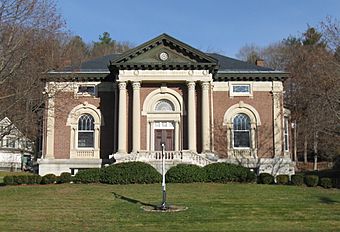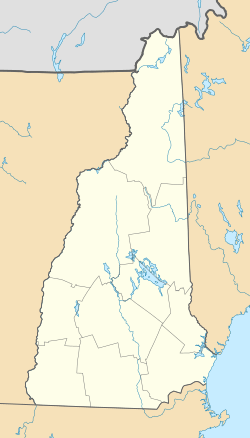Wilton Public and Gregg Free Library facts for kids
Quick facts for kids |
|
|
Wilton Public and Gregg Free Library
|
|
 |
|
| Location | Forest St., Wilton, New Hampshire |
|---|---|
| Area | less than one acre |
| Built | 1907 |
| Architect | McLean & Wright |
| Architectural style | Classical Revival |
| NRHP reference No. | 82001687 |
| Added to NRHP | January 11, 1982 |
The Wilton Public and Gregg Free Library is a special building in Wilton, New Hampshire. It serves as the town's public library. This beautiful library is located on Forest Street, in a historic area of Wilton.
The building itself is quite old, built between 1905 and 1907. It was designed by a company called McLean and Wright from Boston. A generous local businessman named David Almus Gregg gave the library as a gift to the town. He also provided money in 1912 to help take care of it. Because of its history and unique style, the library was added to the National Register of Historic Places in 1982.
About the Library Building
The Wilton Public Library is a two-and-a-half story building made of red brick. It has fancy limestone decorations. The roof is shaped like a hip, with decorative blocks under the edges.
The front of the building has three main sections. The middle section sticks out a bit and has a triangular top. Four tall, fancy columns stand at the front of this middle part. The sections on either side have large windows with rounded tops. These windows are decorated with stone arches and small stone railings below them. The main entrance is in the center, with smaller columns on either side. Above the entrance is a large, half-round window.
The Generous Gift of David Almus Gregg
David Almus Gregg grew up in Wilton. He became a very successful businessman in Nashua. His company made building parts like doors, window blinds, and window frames.
Mr. Gregg was very involved in planning and building the library. He made sure only the best materials and builders were used. The library cost about $100,000 to build, which was a lot of money back in 1907! After the building was finished, he gave more money in 1912. This money was meant to help the library stay in good condition for many years.



